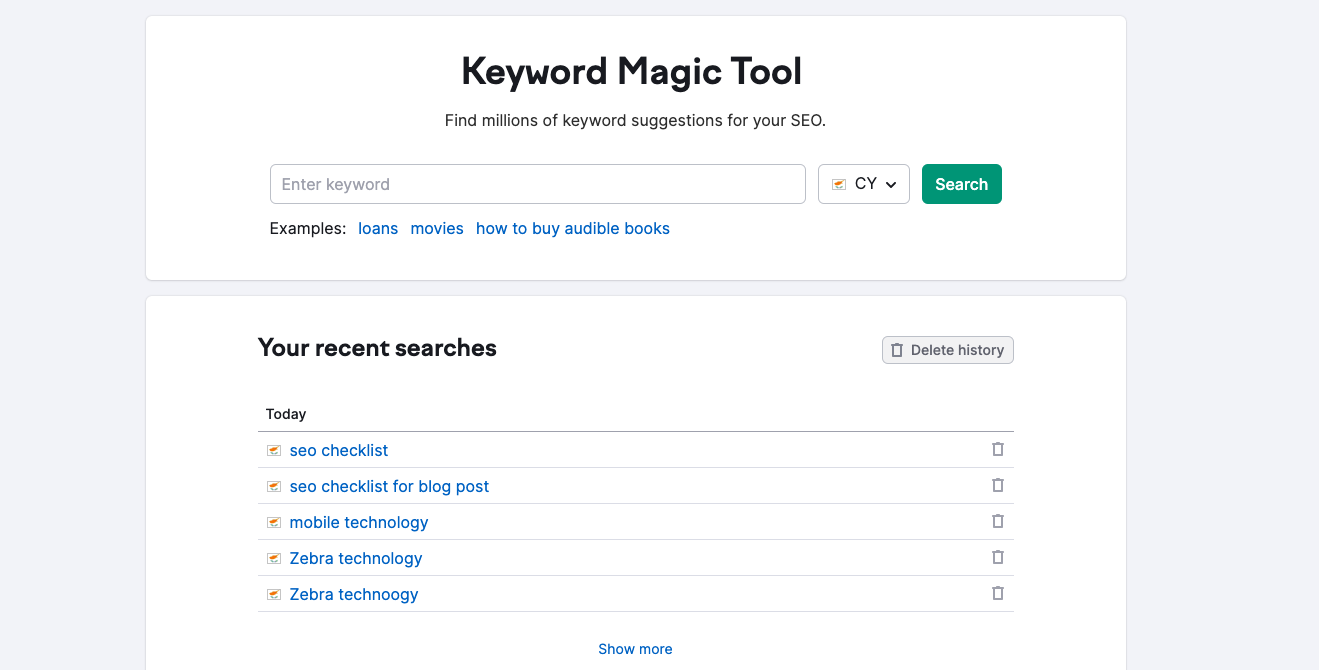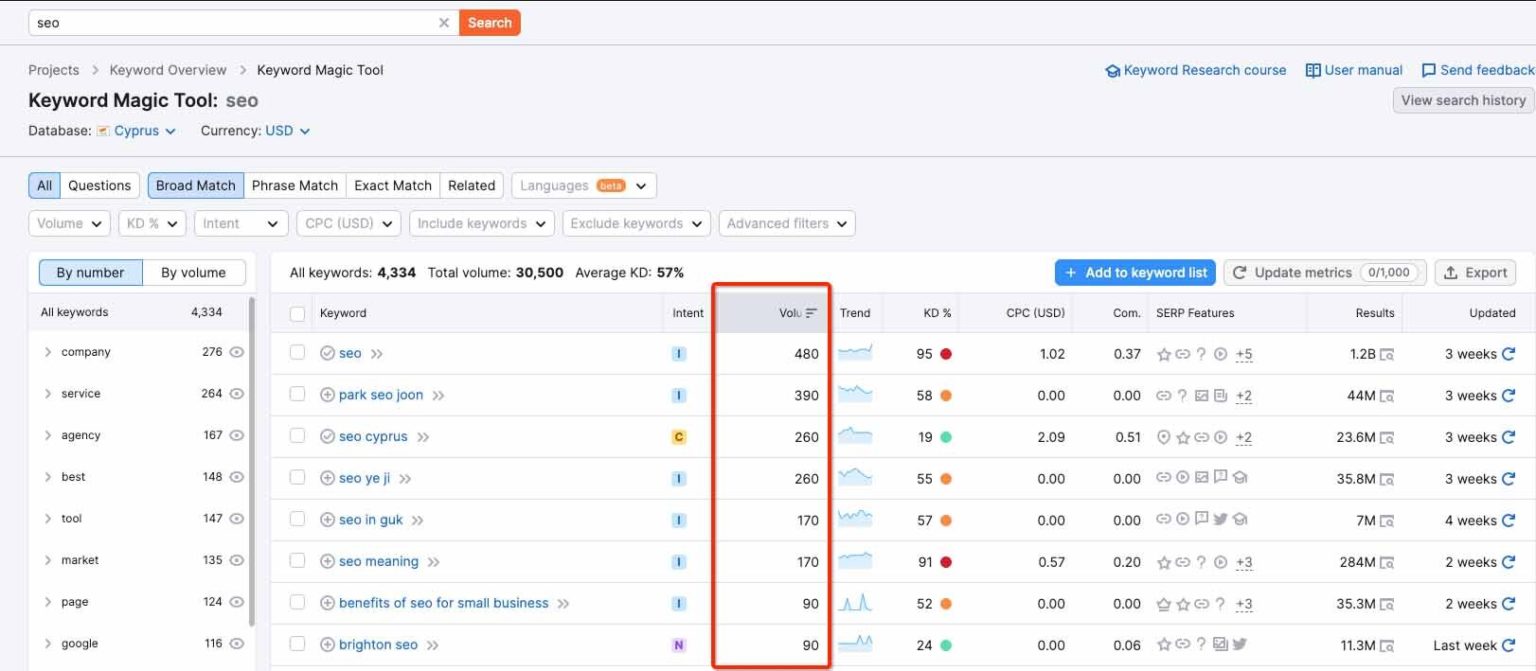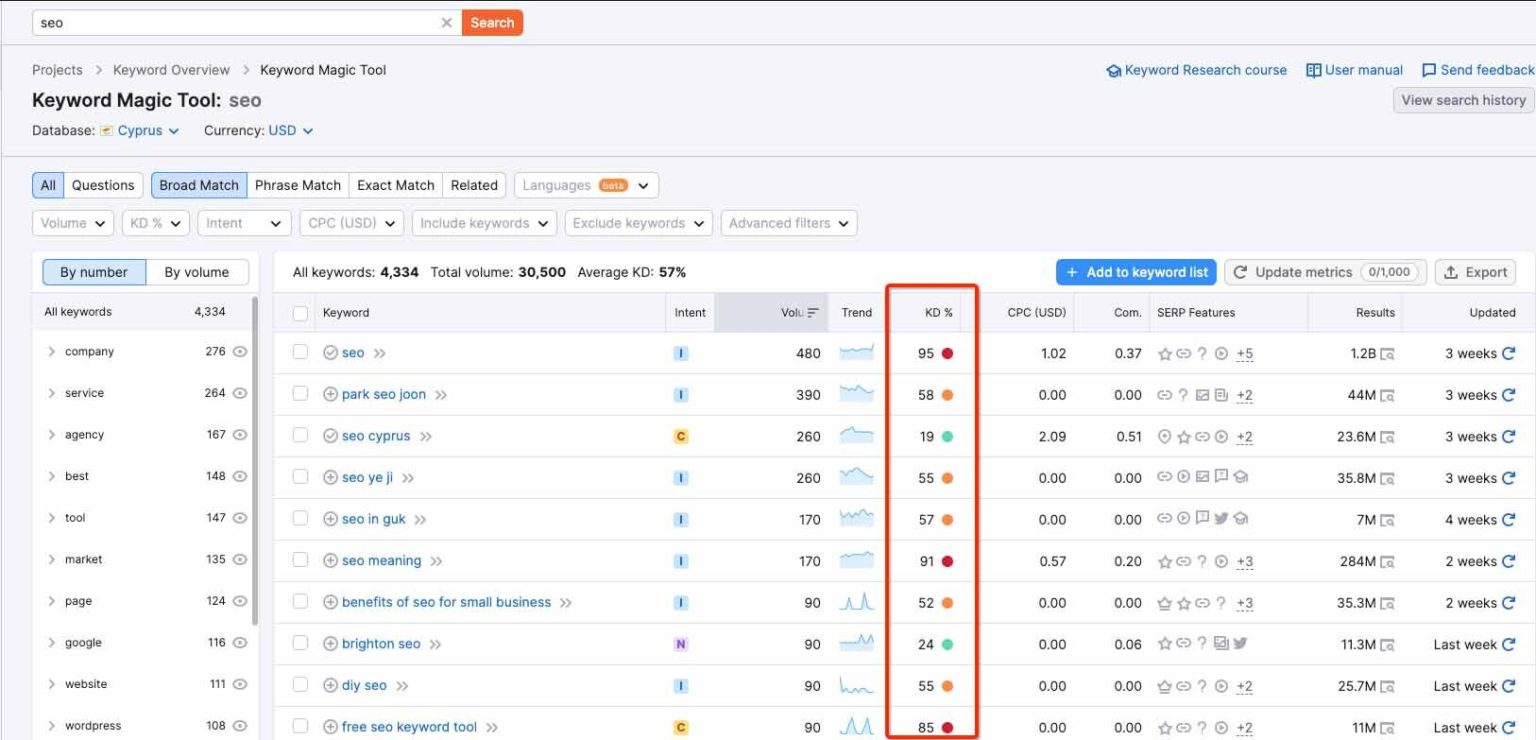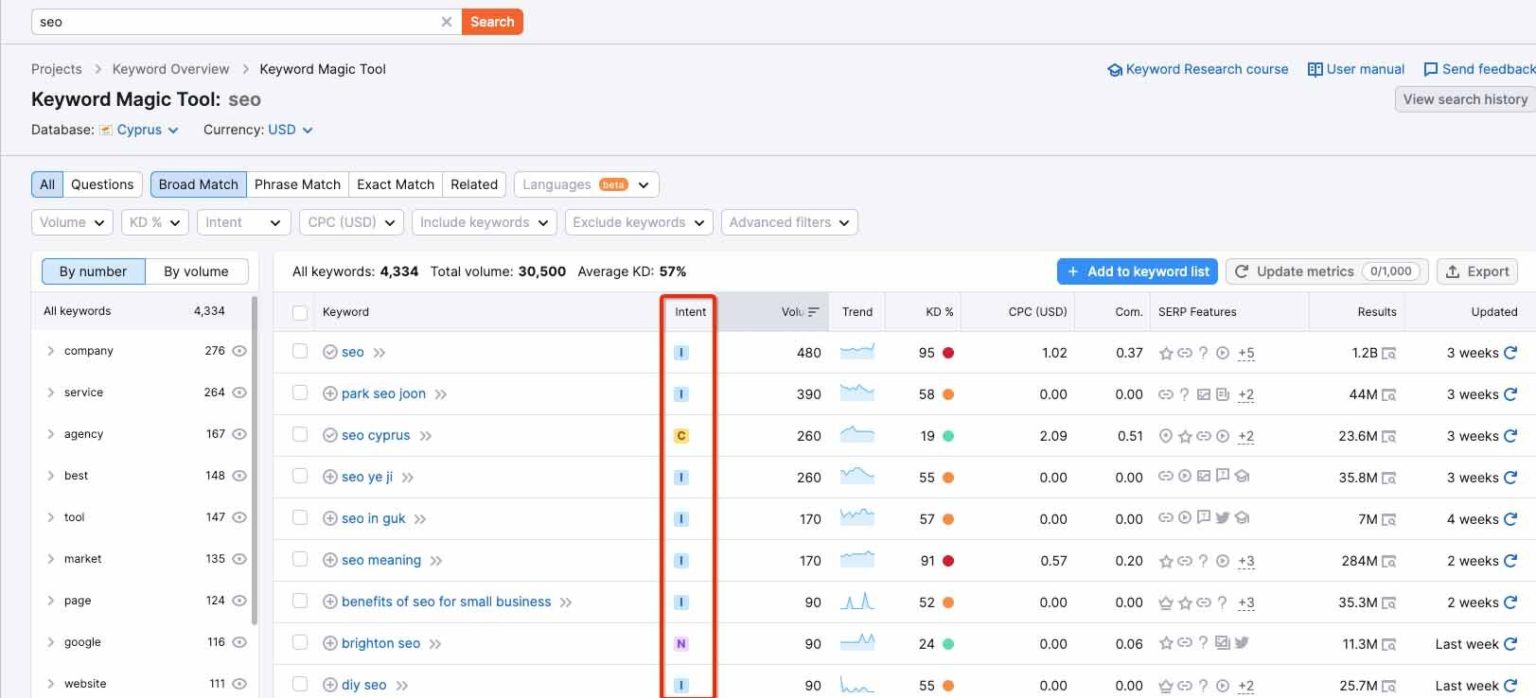Keyword research is an important step in the SEO process that helps you to identify which keywords your target audience is using, and how to tailor your content strategy to their needs. This enables you to get more relevant organic traffic from search engines like Google, Bing and Yahoo!.
Not doing keyword research is like not knowing what you’re buying before you go to the shop. Without keyword research, your SEO campaigns are less likely to succeed.
In this article, we will cover the 3 steps of keyword research:
- How to find relevant keywords
- How to analyse and prioritise keywords utilising key metrics
- How to identify and target keywords
Let’s get the ball rolling:
1. How to find relevant keywords
The ultimate way to find keywords is to utilise a keyword research tool. It will not only help you discover thousands of keywords that are well-suited for your site, but also provide essential metrics that will be invaluable during the analysis process.
At DomainStar we utilise the SEMRush software for our Keyword Research needs.

Use a seed keyword to get more keyword ideas in the search engine results
A seed keyword is a broad search term that your audience would use in order to find content related to your niche. By finding what people are already searching for, you can easily come up with additional keywords related to the main topic and target those instead.
Have a look at your competitors’ keywords
Understanding which keywords your competitors rank for can help you both understand your competitors better and find amazing keyword opportunities.
Identify keywords you are currently missing out
SEMRush’s tool, Keyword Gap is a tool that compares your keyword list to the keyword lists of your competitors. That way, you can spot keywords you don’t rank for and steal some of their traffic.
2. How to analyse and prioritise keywords utilising key metrics
Once you have identified a handful of promising keywords and phrases, it’s time to analyse them for search engine visibility. This step is just as important as finding out what people are searching for in the first place.
The two main keyword metrics that will assist you in prioritising your keywords are:
- Search Volume: How many people search for this keyword on average per month
- Keyword Difficulty: What is the level of competition for this keyword.
Let’s talk a bit more about each metric.
Search Volume
Search volume tells you how many times searchers enter a particular keyword into Google per month (on average). If a keyword has low search volume, it’s unlikely you’ll get a lot of traffic from SEO. But if that same keyword has a high search volume, it could represent an opportunity for your business to grow.

Keyword Difficulty
Keyword Difficulty (KD) is a metric that helps you estimate how hard it is to rank for a keyword in the top 10 organic search results. Based mostly on the authoritativeness of pages ranking on the first page of search engine results, Keyword Difficulty is expressed on a scale from 0 to 100. The higher the number, the harder it is to rank for a particular keyword.

3. How to identify and target keywords
The final step of keyword research is to find out how to target the keywords you want to rank for.
Identify your Primary Keyword
One topic usually contains multiple subtopics. The more detailed your content is, the more opportunities there are to cover keywords that people are searching for when looking for information about this topic.
There are 2 types of keywords:
- Primary Keywords – A primary keyword is the most important keyword on a page. It is the most relevant, has the highest search volume, and is used in the title tag and elements of a page’s content such as headings and subheadings.
- Secondary Keywords – A secondary keyword is a keyword within the same topic as your primary target, but with a lower search volume. It is a good idea to add secondary keywords as well to help show up for other search queries that might be related to your primary targeting. Secondary keywords are useful for long-tail targeting and niche site promotion. No matter what stage of SEO you are at, adding secondary keywords to your content is highly recommended.
Identify the Keyword Search Intent
Analysing search intent is probably the most important aspect of keyword research. Search intent is what drives people to search for something. If you can correctly identify the intent, it will help you find which terms are most likely to drive traffic on your site.
There are 4 types of keyword search intent:
- Navigational – Navigational search is searching for a specific page or piece of content. In this case, the user may know what they’re looking for but not where it is located on the site.
- Informational – Informational searches provide general information on a topic, such as a definition of a word.
- Commercial – This is when the user does research for his/her options before making the final decision on purchase
- Transactional – This is when the user searches for something specifically with the intent of making a direct purchase.
Search intent is the reason users are searching for a particular keyword. Search intent can vary widely and be very specific, so it’s important to understand what a search is looking for.

We have written a great article on what is search intent in keyword research.
There are many useful keyword tools that can help you out with conducting a good Keyword Research. These are but not limited to:
Performing keyword research might be time-consuming and confusing. DomainStar is here to assist you and do all of the work for you as part of our SEO service. Do not hesitate to get in touch with us today!
FAQs - Frequently Asked Questions
Keyword research is the process of finding relevant keywords and keyword phrases, identifying the search volume of each one, and determining which ones have the greatest potential for your business.
The best way to conduct a Keyword Research is by using a Keyword Research tool.
A good keyword research tool will help you find the best keywords for your business so you know what consumers are searching for. This will help you see gaps in the market and find new ways to reach out to potential customers.
Keyword research is the foundation of your SEO strategy, and can help you identify the most important (and profitable) keywords for your business. When done right, keyword research can help produce highly targeted content that engages readers, boosts traffic and leads to more conversions
Keywords are the most important part of your content marketing strategy, so it’s important that you do proper keyword research at the beginning of your strategy creation process. You can always re-evaluate and update your keywords later on too to find new opportunities for success.
This really depends on your industry and niche. Basic Keyword research might only consume a couple of hours. But again, this depends on your niche and industry.


